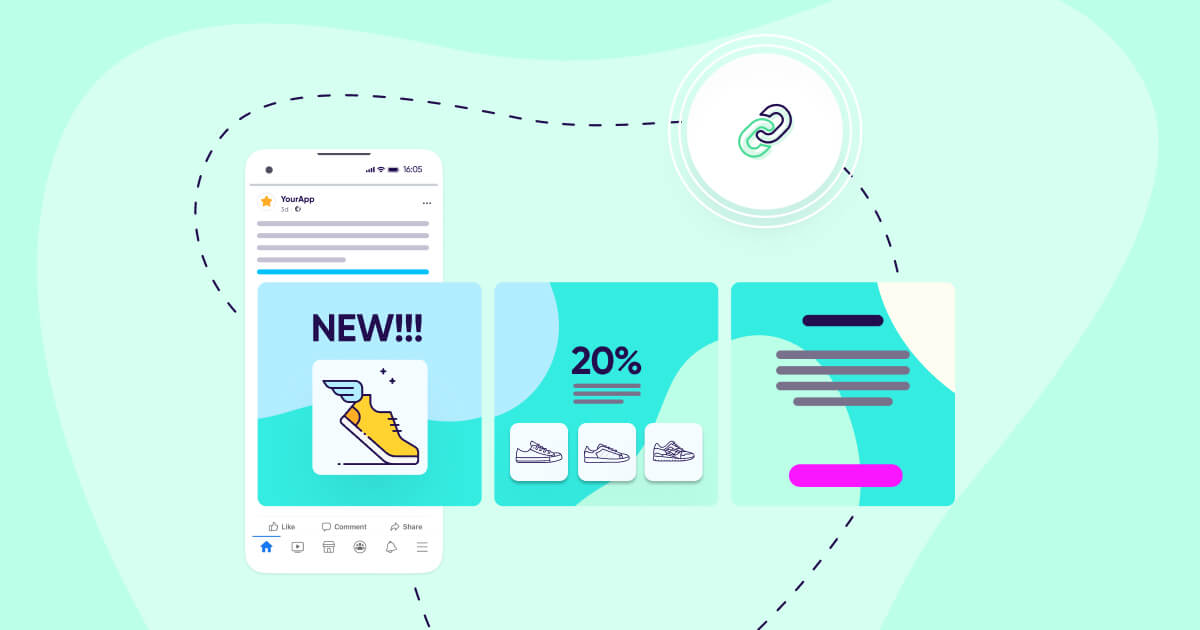
Cashing in on the ROX opportunity in financial services
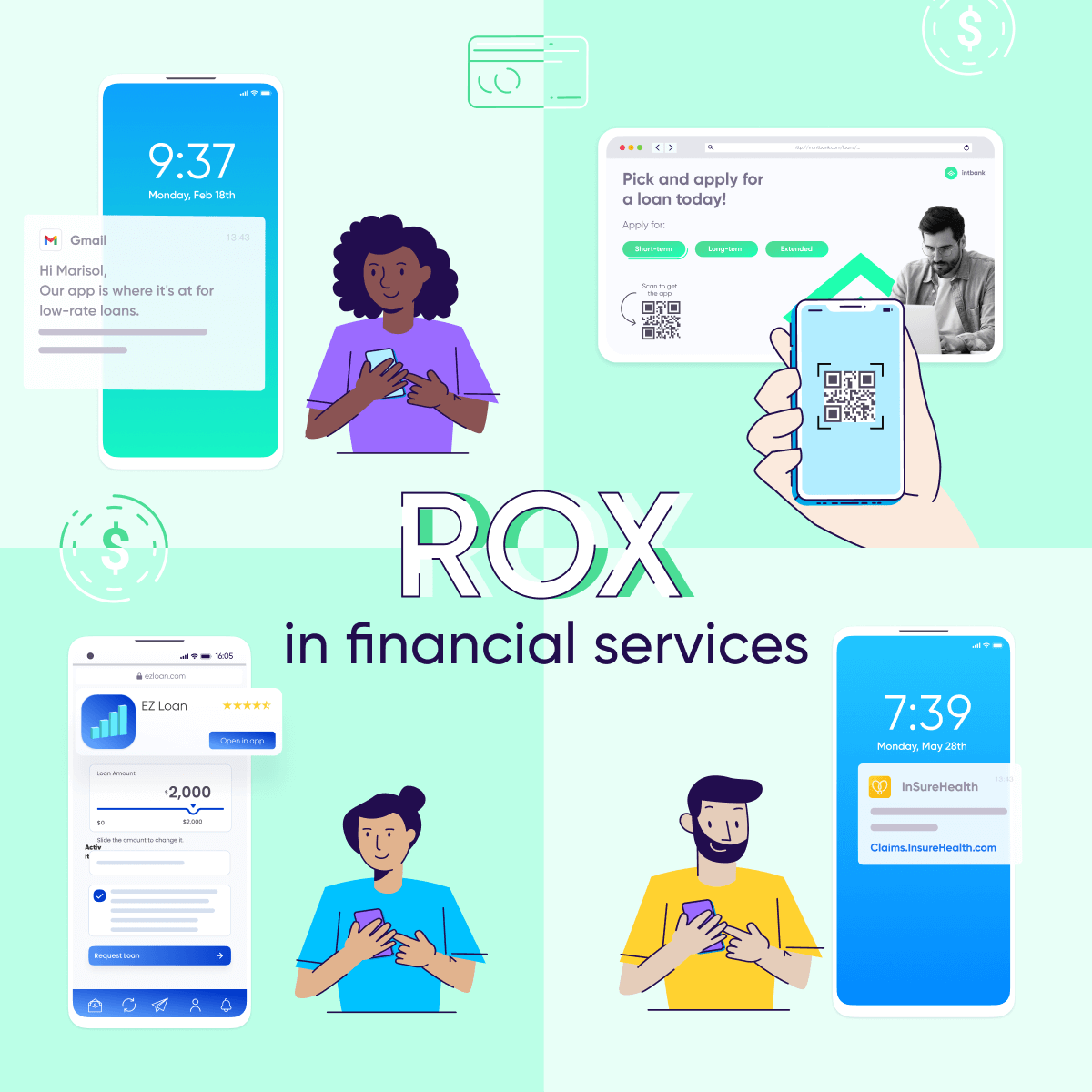

The intricate financial services sector is undergoing serious transformation. Adding to this complexity is this sector’s wide variety of sub-segments – from retail banking to insurance, and down to wealth management and the product differentiation within each one.
Pressure from disruptive mobile-only competitors, the shift to digital services spurred by Covid, and the economic fallout from sharply curtailed business activity – have placed traditional institutions on their back heels.
To not only survive but thrive in this new environment, long-standing financial services firms are now executing on a playbook that combines digital transformation with a maniacal focus on customer experience (CX). And on the digital front, acquisition and retention are increasingly tied to the mobile channel.
In fact, according to Adobe, two of three institutions consider themselves “strongly mobile-first” and are replacing legacy workflows with mobile-centric digital transformation strategies, while 90% of firms rank mobile experience as their top priority in the foreseeable future.
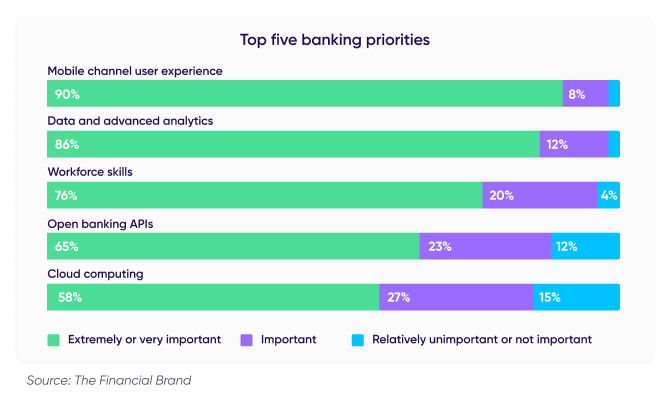
With the pandemic boosting the importance of apps across all verticals, the majority of banking, insurance, and wealth management firms are placing their eggs in the app basket.
In a recent Adobe report, the majority of financial services executives stated that they plan to:
- Include more than 75% of their functionality in their app.
- Drive over 67% of customers to become app users in coming years.
With the increasing importance of apps in the backdrop, this blog explores trends among mobile-first firms muscling through digital transformation, especially as they relate to apps.
It shows how firms investing in app customer experience are realizing returns on their investment in experience, also known as ROX, and it shares prescriptive use cases to drive CX and reap the benefits of ROX.
Industry trends: It’s all about the experience
What do the next few years have in store for mobile-first companies? Below are five interconnected trends with an underlying theme: companies that invest in excellent cross-channel, app-centric CX will be rewarded for their efforts.1
- Digitization – The lion’s share of financial services companies are investing heavily in digitizing their operations to deliver memorable customer experiences efficiently, effectively, and in compliance with increasingly complex government regulations and privacy policies.
As stated above, firms understand that apps are critical in the overall channel mix and are key to retention goals.
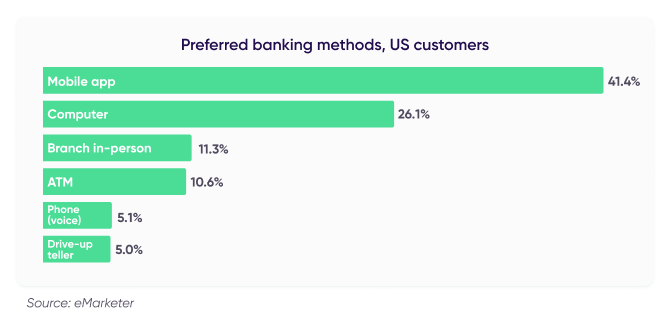
- Apps – With over 40% of customers stating that the app is their preferred banking channel, institutions are making a beeline to becoming mobile-first and app-centric, while ensuring that digitization is directly tied to the app.
Apps are important for upsells, and positive app experiences create a proven cycle of usage and satisfaction. Millennials and Gen Z users prefer digital, in general, and the app, in particular, and the latter is a main deciding factor for choosing and staying with a bank.
“For banks, the mobile app is the 2nd most significant factor in choosing a bank behind fees.“
Chris Young, Financial Services Industry Strategy, Adobe
- Personalization – To build trust and meet customer expectations created by apps outside of finance (e.g., Amazon and Netflix), personalization is now a must-have in financial services.
Customers expect that banking, insurance, and wealth management businesses provide them with information, services, and products that are relevant to their needs in real time. And banks and credit unions that create a customer-centric culture are 60% more profitable than those not focused on it.
- Consistent omnichannel experience – Institutions will focus on providing fluid, streamlined and contextualized experiences that are consistent at all touchpoints, whether they’re visiting a bank branch, withdrawing money from an ATM, or checking account details in the app.
Consistent CX promotes customer loyalty, deepens and extends the relationship with the financial services provider, and optimizes value for customers and financial firms alike.
- Data, data, data – Creating personalized, seamless experiences is contingent on having the right data and analytics. Mobile-first firms are working diligently to combine data from various first and third party sources with CRM and predictive analytics tools so that they can delight customers with personalized offerings. Effective use of data can result in upsells, stickiness, loyalty, and high LTV.
Delivering on ROX with smooth journeys to your app
The above trends lead to clear conclusions. Financial services firms across all sub-segments should invest in CX and in driving consumers to their apps from any touchpoint. They should craft seamless journeys to the app and of course delight users in the app itself.
Doing so results in ROX, a measurement framework that informs many of our customers regarding the business impact generated by their CX investments.
AppsFlyer financial services customers hit their ROX goals by bringing users to their app from anywhere – digital channels such as social media, email, a mobile website or physical channels such as in-branch displays – and creating experiences that are:
- Contextual: Users sense where they are and where they’re going at any point in their journey.
- Personal: Users feel like they are getting an experience built uniquely for them.
- Smooth: Users are ushered through seamless journeys without recognizing they’ve been taken through more than one touchpoint.
- Private: Users can choose what personal data they want to share and which details to keep private.
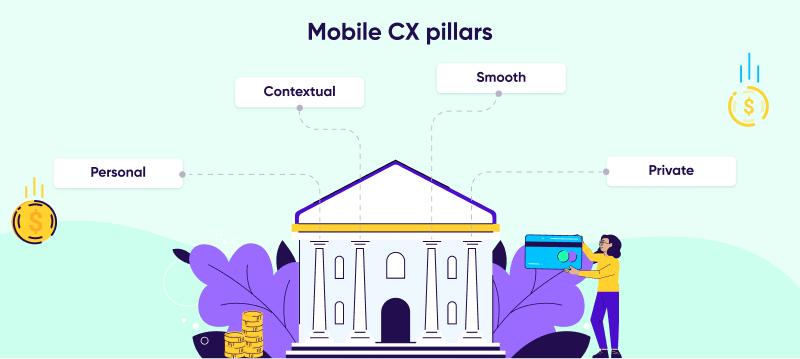
The question is: what is the actual business impact of creating journeys with these four pillars?
AppsFlyer data shows that financial services firms investing in CX demonstrate excellent conversion and share of paying users rates:
- 36% of consumers that capture a QR code and 25% of users clicking on a web banner went on to download the finance firm’s app.
- When financial institutions run remarketing campaigns to existing app users, 25% arriving from an email message and 19% arriving from a web banner went on to execute an upsell event.
Rolling out ROX in financial services: Use cases
At AppsFlyer, we’ve witnessed firsthand how financial services leaders create delightful experiences and reap ROX by putting the four pillars above into practice.
Below are examples that show how firms tackle common industry challenges and provide opportunities to hit mobile growth and retention KPIs:
1. Traditional banking: Migration to app (QR code)
Migrating customers to the app can be challenging, especially Gen X and older users who prefer to do their banking on desktop. One tactic that has worked well for moving users to app banking is placing QR codes at key trigger points in the journey.
Widely used and gaining popularity during the pandemic, QR codes can be leveraged as an app onramp providing peace of mind and ease of use to customers. Banks can place QR codes on any page of their desktop site, in-branch signage, and marketing materials to allow users to download the app after scanning the QR code.
In the example below, a bank displays a QR code on the homepage of its desktop website to encourage a user to scan the code.
The marketer uses a deep linking solution to ensure that customers are redirected smoothly to the right app store (Google Play, App Store, Samsung Galaxy Store, etc.), and then to the right in-app content after the app is launched.
The bank has made sure that the app is simple, yet powerful so that users will opt to use it for their banking needs.
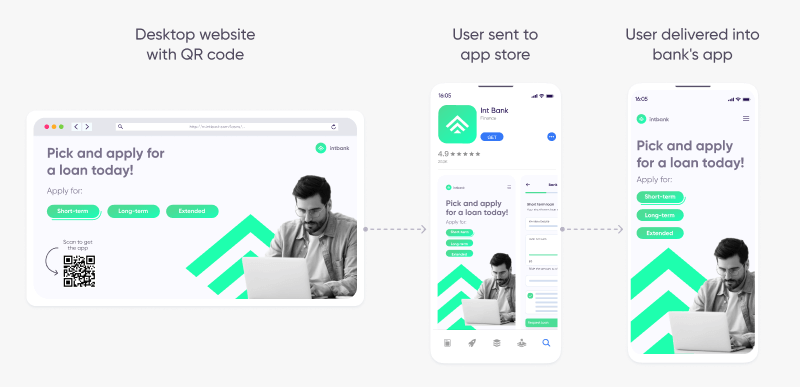
By initiating a smooth journey from the desktop website to the app with the help of well-known, easy to use QR codes, the bank drives its user acquisition goals.
In addition, taking advantage of the fact that 75% of users will be willing to use QR codes more in the future, and that app users display higher loyalty and LTV, the bank is betting big on its app. And is building contextual journeys that begin with QR codes displayed on its mortgage and credit card pages as well.
2. Traditional banking: Process abandonment (SMS)
When it comes to digital journeys, an acute pain point for finance companies is the dropoff rate of prospective customers filling out extensive forms. In fact, about 75% of forms in the finance industry are abandoned mid-process.
But what if there was a way for financial services companies to assist many of those that abandon their forms by allowing customers to take advantage of the better CX that apps provide?
This is what forward-thinking firms already do. How?
They combine one or more of their owned media channels with deep linking to remind customers of the form and bring them directly to the point at which they dropped. This way they can easily continue filling the form and completing the desired action.
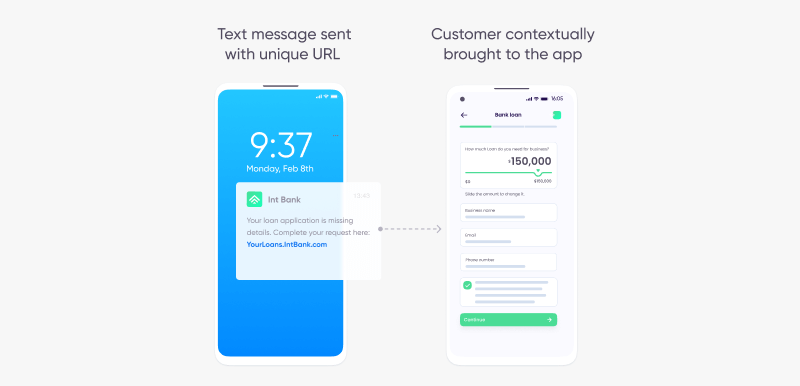
In the above example, Int Bank has set up a process that engages with customers who have abandoned forms. The bank uses a deep linking product to dynamically create a unique, personalized URL for each customer that has abandoned the form.
An SMS messaging platform receives the link and schedules a reminder SMS, including a CTA, to continue filling out the form. When clicking the link, the app opens in the right location so that customers can pick up where they left off.
Firms that build smooth, contextual, and personalized bridges to their app can fulfill two critical goals simultaneously. They can “rescue” forms abandoned by customers with high intent, and they can delight customers by helping them achieve the original goals they had set out to achieve.
3. Insurance: Process automation (SMS)
A common issue for insurance firms is completing a process which involves multiple stakeholders, such as filing a claim or opening an account.
Streamlining and automating the back-and-forth process is critical to saving client and employee time, as well as creating a smooth experience for the customers.
Insurance companies can identify processes that can be automated and reduce human interaction so that employees can focus on more important tasks.
In the example below, InSureHealth sought to reduce the time and effort that call center representatives were investing in contacting customers to complete their forms.
They set up an automated process that combined their SMS provider with a deep linking platform. The latter creates a dynamic link that delivers customers directly to the in-app page with fields that require completion.
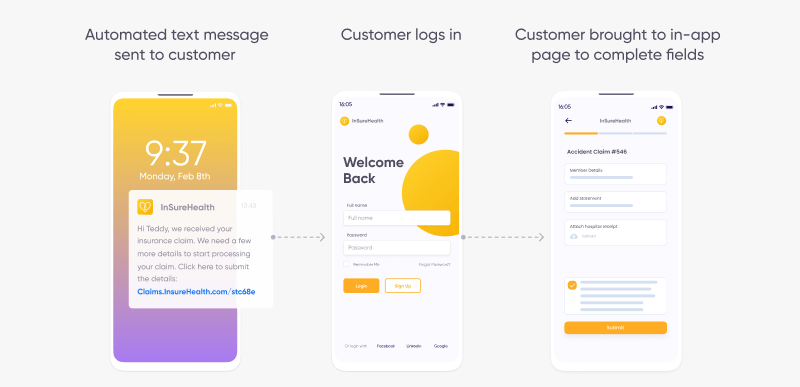
Automating processes such as collecting information from customers in a friendly, contextual manner is a win-win. Insurance companies reduce time and effort associated with “chasing” customers for information, by enabling customers to complete their claims rapidly and easily.
Want to learn more about winning with ROX?
You should now have a better understanding of how financial services institutions are creating awesome customer experiences that lead to app growth, engagement, and ultimately to ROX. Reach out if you’d like us to help you drive ROX in your business.
1 . Industry trends are based on AppsFlyer data and these sources: Harvard Business Review, Taking the Financial Services Customer Experience to the Next Level, 2021, Salesforce, Top Financial Services Customer Experience Trends, Qualtrics, Breaking down silos to deliver customer experience in financial services, eMarketer, Preferred Methods of Banking, 2021, The Financial Brand, 6 Digital Banking Transformation Trends for 2022, 2021,
 Looking for an MMP? Get your free assessment template today
Looking for an MMP? Get your free assessment template today



